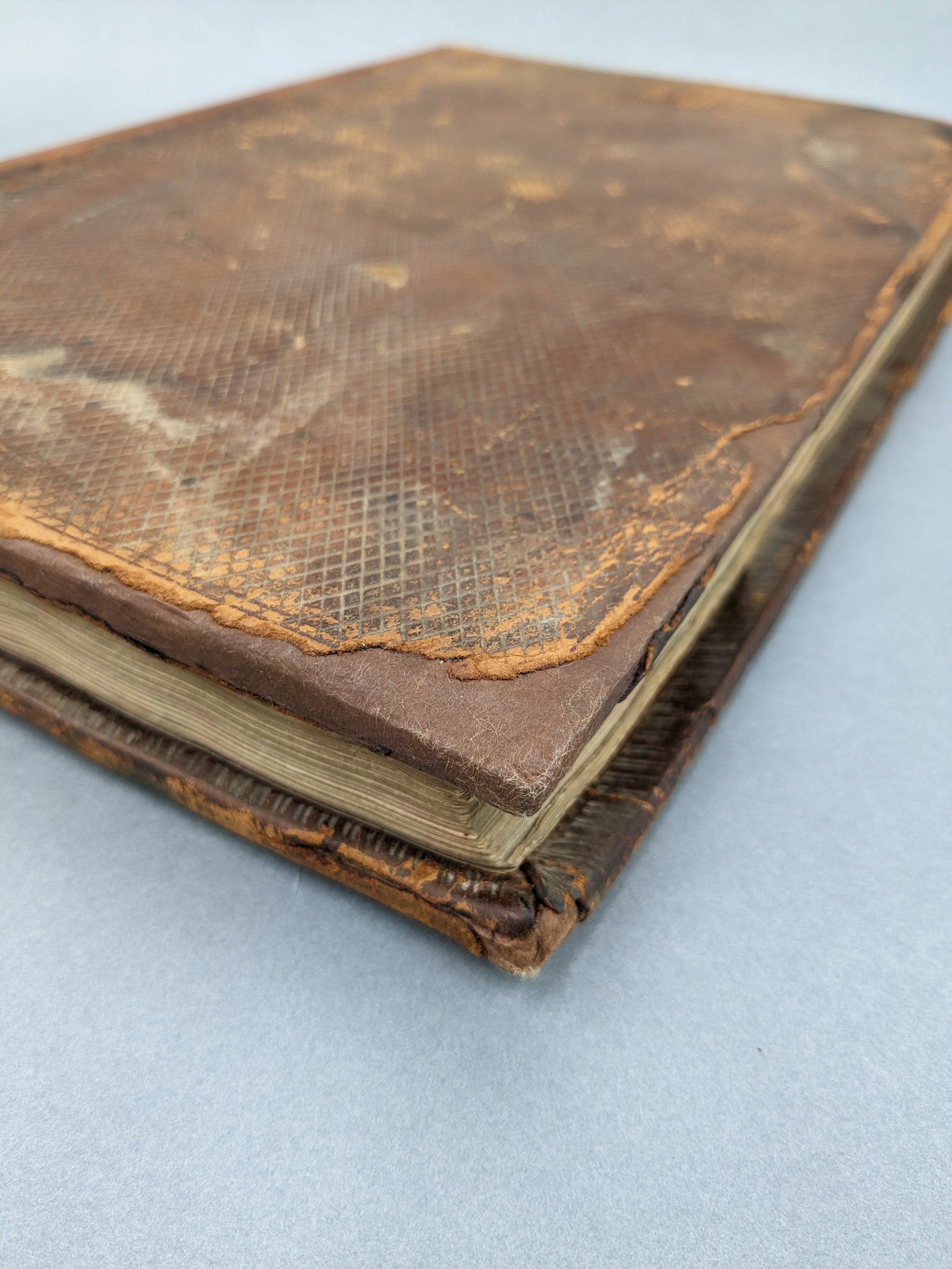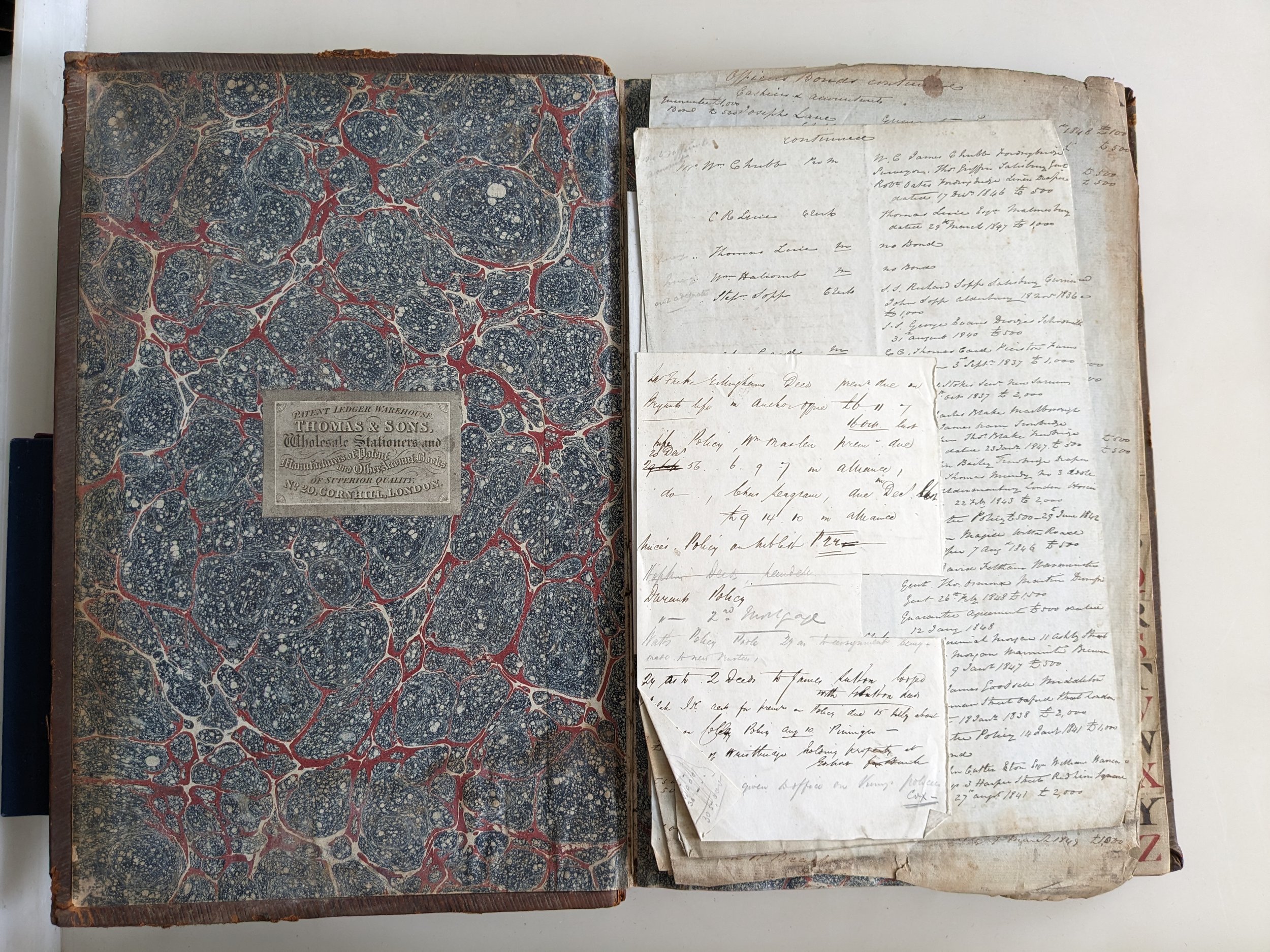Lloyd’s Bank Archives Victorian
Account Book
Brief Description
Portrait-format paper textblock bound in a full leather, Russia calf springback structure. The volume is sewn on 4 parchment supports, with hand-sewn endbands, with blind tooling on the board surface and edges.
The springback structure is a type of stationery binding to facilitate writing by springing up the spine opening, which allows the book to lay flat comfortably. The original springback design was patented by the Williams Brothers in 1799. This particular book seems to vary slightly from the original design, and has a remnant of gold-tooled label on the spine, which has a partial reference to a patent number. The book records bond details dating from 1835 through 1855, which implies continuous use for 20 years.
Brief Condition Assessment
The textblock is in generally fair condition. Sewing also in good condition.
Inclusions pinned on various pages causing corrosion and iron stains.
Corners are soft and delaminating.
There is evident of water damage, causing tidemarks and mould on the surface of the leather
The texture of the Russia calf has caused some abrasion on the high points of the tooling, and particularly along the edges where there are areas of loss
The leather has also suffered from red rot due to poor tanning
Spring mechanism is missing
Brief Treatment Outline
Surface Cleaning
The book was cleaned by brushing off loose particles into a museum vac with a HEPA filter. This was done in gentle sweeping motions directed into the museum vac attachment in order to avoid disturbing mould particles into the air circulation of the studio.
Consolidation
The leather was consolidated with a 2% Klucel G solution, which provided the right amount of cohesiveness and tackiness for the leather condition. The solution was applied using cotton wool. The cotton wool was dipped into the solution, wiping off any excess, and then applied to the leather surface in a circular motion to avoid any streaks.
The board corners were consolidated using slightly diluted wheat starch paste, which was inserted into and between the board layers using a hypodermic needle. The corners were then pressed between blotting papers, evalon, and mill boards as they dried to ensure they take on the correct shape.
Board & corner repairs using toned Japanese tissue
Board corners and edges that were exposed through leather loss were re-covered using Japanese paper toned using gouache acrylic. Gouache acrylic was chosen as it is waterproof and dries to a matte finish. The toned paper was cut to the right shape and pasted onto the board, underneath the leather.
Create melinex encasing for loose inclusions
Loose inclusions that were found under the left board were placed back in their original position using a melinex folder which was secured in place by hooking small tabs under the sewing thread. This ensures the loose papers were secure and protected from causing any transfers onto the decorative endpapers.

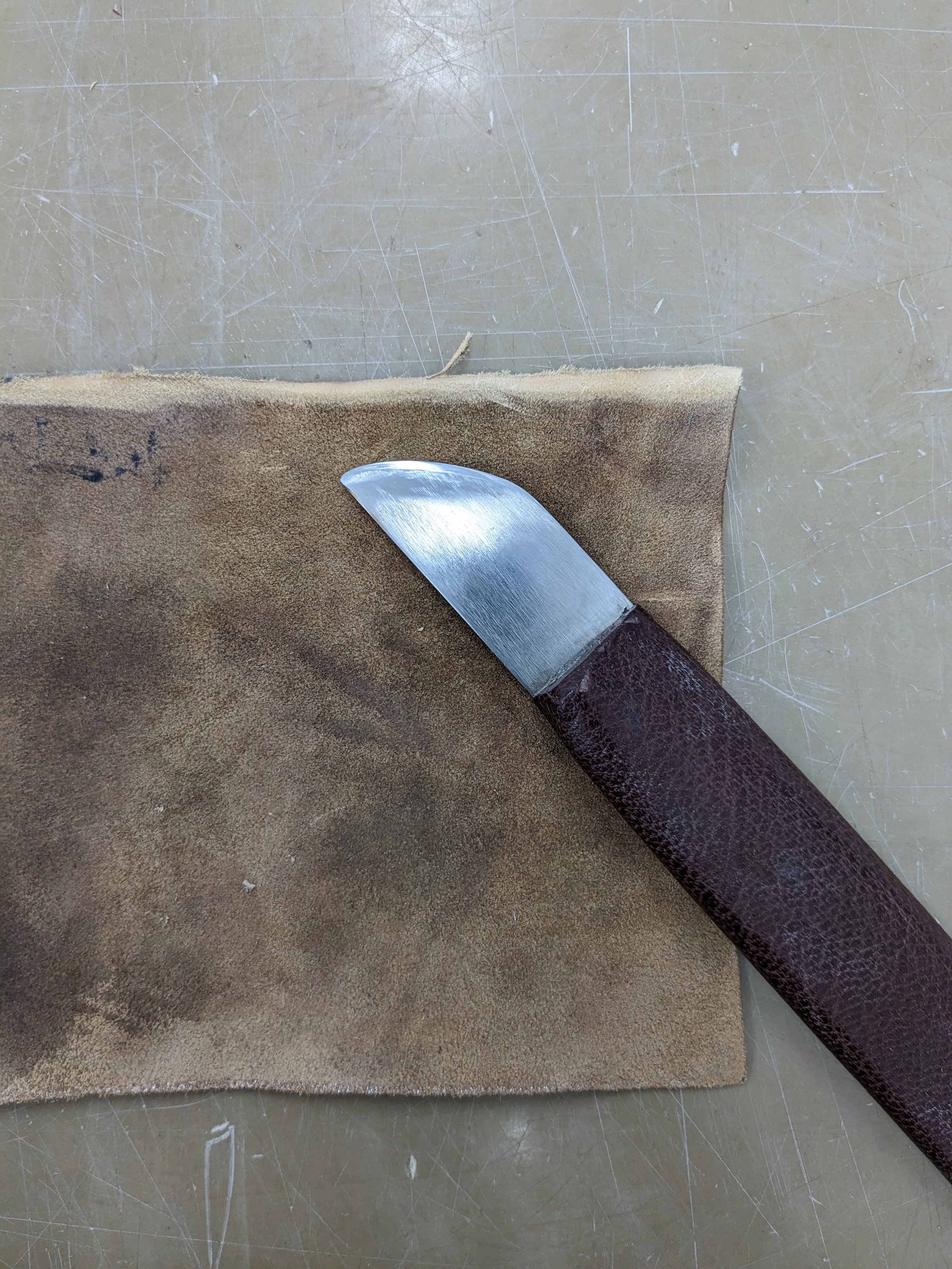
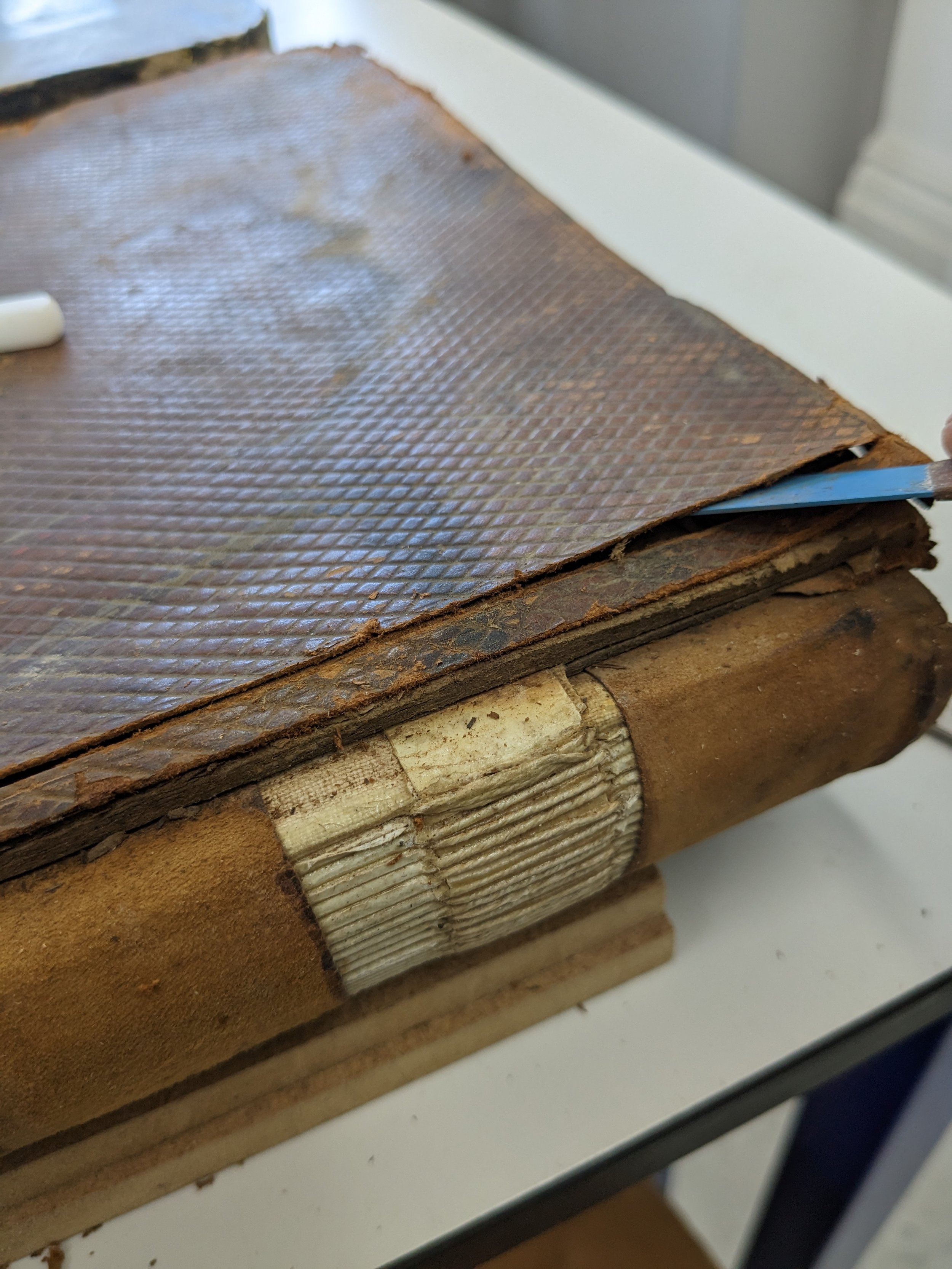
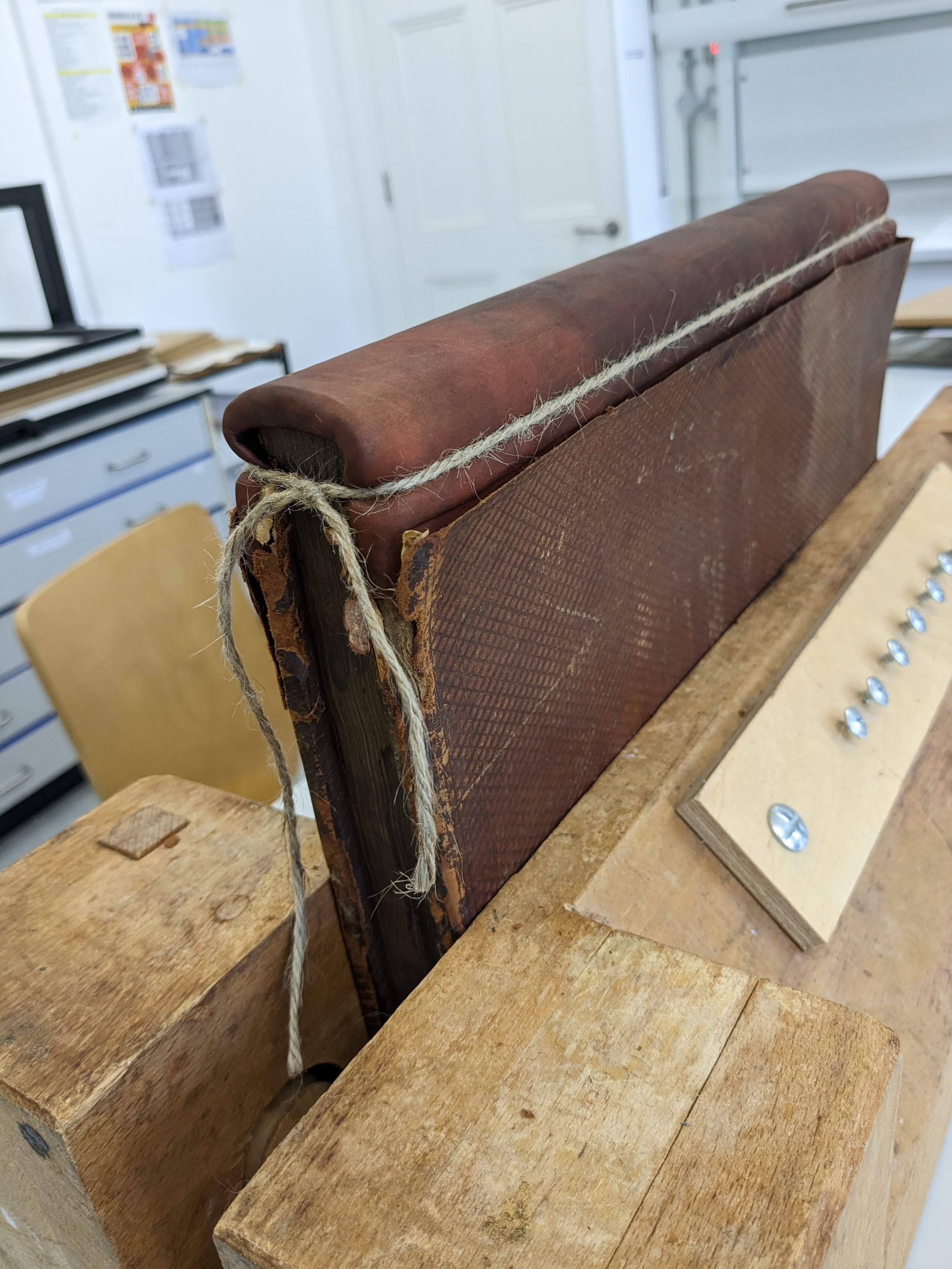
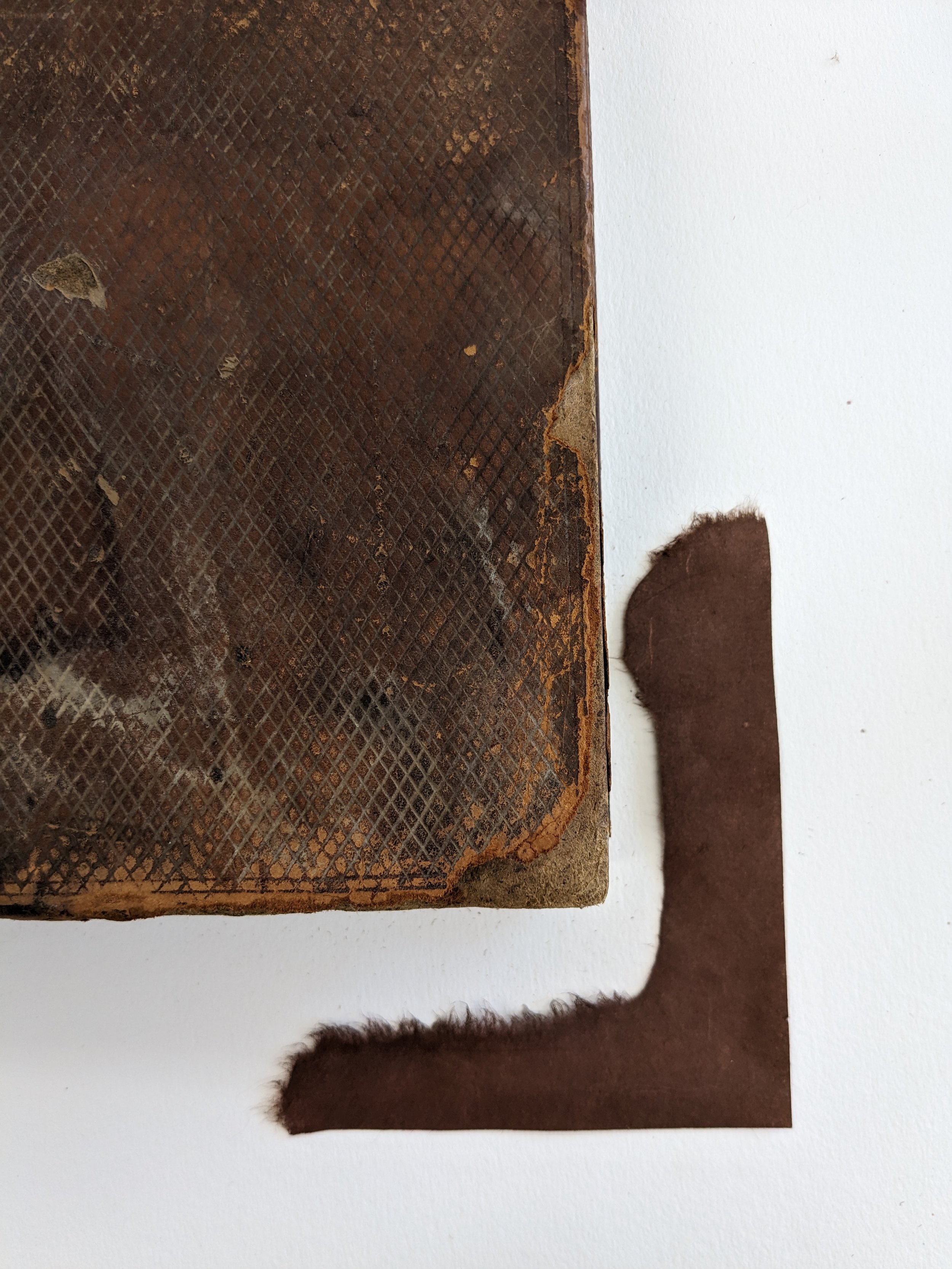
Before & After Photos



